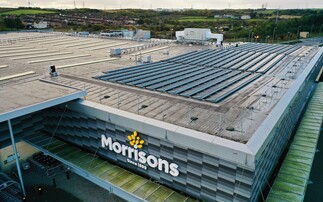Verco's Tom Randall explores how to embed behaviours within your business that are compatible with the net zero transition
Many people perceive achieving significant reductions in CO2 emissions and ultimately net zero emissions as primarily a technical challenge. Despite being a chartered engineer, in my view, it's a behavioural challenge.
Our buildings and infrastructure may be the direct source of CO2 emissions but their design, construction and operation influence these emissions and they are all activities (for the moment at least!) led by the behaviour of people: designers, contractors, operators. If we change their behaviour we change the emissions.
The science of behaviour change is complex and the thought of tackling this subject may seem intimidating. There is a simple model of behaviour change that may provide a useful initial lens to look through to begin to identify what is behind current behaviour and how it could be changed:
Behaviour = Incentive + Ability
For someone to act a particular way they need to be both incentivised to behave that way and have the ability to act on that motivation. Many attempts to change behaviour fail because they address incentive but not ability or vice-versa. But what are the incentives on and abilities of the designers, builders and operators of our buildings and infrastructure, and how well do they align with low CO2 emissions?
Incentives
Arguably, the strongest incentives on designers, builders, and operators are the contract and the fee. There are other significant considerations such as historic ‘norms' and professional responsibilities but in my experience contracts and fees are the most influential: what are they getting paid to do (and as importantly not do), what are the penalties, and how much resource does our fee allow.
Though a project may have stated ambitions to be low emission in most cases contracts are still poorly aligned with this outcome. They rarely have relevant, measurable performance outcomes (such as Key Performance Indicators and Service Level Agreements) that can be used to hold providers to account. Yet frequently they include requirements that are counter to low emission ambitions: e.g. building services designers required to meet the demands of a level of occupation in a building that is never likely to be required, contributing towards over-sized, less efficient equipment.
The issue is exacerbated by contracts with each professional silo: architect, services engineer, structural engineer, contractor, facilities manager etc. There is a tendency for each contract to incentivise each profession to over engineer ‘their bit' frequently at the expense of the outcome as a whole - which should be the priority.
Reviewing contracts and identify opportunities to improve alignment with low CO2 emissions is possible and the Commitment Agreements used in Australia as part of their NABERS scheme provide a good example of where this has been done.
Similarly, to deliver low CO2 emissions the fees for different providers should be reviewed and in most cases some increase may be justified. Simply, now that there are growing commercial drivers to deliver low energy buildings and infrastructure, increased income and asset value, investor demands, access to cheaper debt, risk of stranded asset, there is a case to invest a little more in the fees so that providers have the resource to ensure these commercial drivers can be addressed.
Ability
If incentives are aligned do the relevant providers have the ability to act on them? Perhaps the most significant determinates here are knowledge, skills and tools. If they don't have the ability then where does responsibility lie to obtain it? In many cases it will lie with the provider themselves to develop knowledge, skills and tools, potentially through innovation, to meet the client requirements but this isn't always the case.
A stand-out example is facilities management. Facilities management is not given the attention it deserves but this is the profession at the coal face of day-to-day operation of buildings. It is a critical profession to achieve emission reductions. There is certainly scope for facilities managers to improve their knowledge and skills relating to the efficient operation of buildings but even allowing for that they are frequently faced with, even brand new, buildings that are complex, poorly commissioned and with limited access to performance data to understand how the building is operating. In this case at least some of the responsibility (and opportunity) lies with the client to help provide the ability to run a building well, ensuring a building is properly commissioned and providing facilities managers with appropriate tools. These might include Building & Energy Management Systems with more intuitive views to monitor performance and more sophisticated analysis platforms.
As well as reviewing the incentives you are responsible for, consider what your providers need in order to act on the incentives. Do you have control or influence over their ability to act?
So, if you have an ambition to reduce the energy use and CO2 emissions from the buildings you own or occupy ensure you consider the people as well as the system that influences those emissions. A review of the design and systems of a building is certainly part of the solution but as, and arguably more, important is a review of behaviour of the professions who design, deliver and operate them and the identification of changes to implement and embed a culture of building performance.
Tom Randall is head of building optimisation service at Verco








